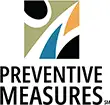EFFICIENCY and SPEED drive innovation in tech.
When Justin Liu and I started exploring healthcare, I noticed how manual data entry and outdated processes were slowing down an industry that should already be leveraging AI for greater efficiency.
It is notoriously difficult to build software for Healthcare. Why? Every electronic medical record (EMR) system is different:
✔️ Data Formats Vary
✔️ Workflows Aren’t Standardized
✔️ Resistance to Change Is High
Traditional software struggles to keep up because it requires deep integration with fragmented systems, massive data reconciliation efforts, and ongoing maintenance to remain functional.
But AI, particularly large language models (LLMs), is changing this. Instead of rebuilding healthcare’s fragmented infrastructure, we can layer AI on top of existing systems, creating a standardized abstraction that works across multiple platforms—without forcing providers to rip and replace their workflows.
Pre-bill chart reviews are an essential yet highly inefficient part of the healthcare providers revenue cycle. Every provider does it for every patient visit, yet the process is still manual, slow, and error-prone, leading to missed revenue opportunities, claim denials, and compliance risks.
Here’s where LLMs and AI-powered automation fundamentally change the game:
✅ AI doesn’t need to rebuild the system—it adapts to it
Instead of forcing providers to adopt yet another rigid software tool, AI can work on top of existing EMRs, analyzing documentation, identifying coding gaps, and ensuring compliance in real time—without requiring deep system integrations.
✅ AI can process and standardize unstructured data across multiple EMRs
Traditional software requires painstaking data mapping between systems. AI-powered models can interpret, extract, and structure information from different sources, making pre-bill chart review faster and more consistent across multiple provider networks.
✅ AI can be customized at scale—without retraining on millions of data points
Instead of rebuilding models from scratch for each healthcare system, LLMs can be customized through instruction-based learning, enabling providers to fine-tune workflows without massive training datasets. This means quicker deployments, higher adaptability, and lower costs compared to traditional AI approaches.
Tackling pre-bill chart review with AI is about more than just efficiency—it’s about creating a scalable foundation for automation in healthcare. By focusing on a high-frequency, high-impact process, we’re proving that AI can seamlessly integrate into complex systems, adapt to provider workflows, and deliver measurable improvements in speed and accuracy.
That’s why at Charta Health, we’re not just building software—we’re building AI-native infrastructure to fix healthcare’s deepest inefficiencies at scale.













